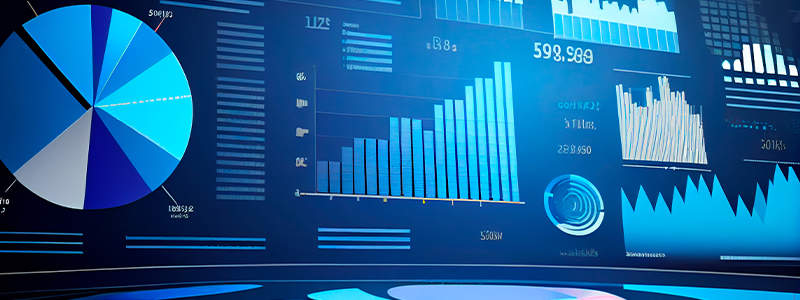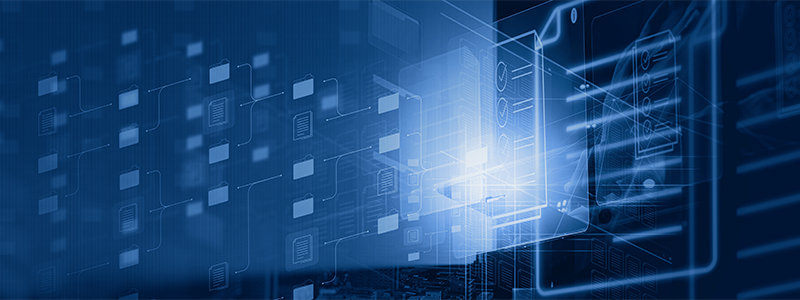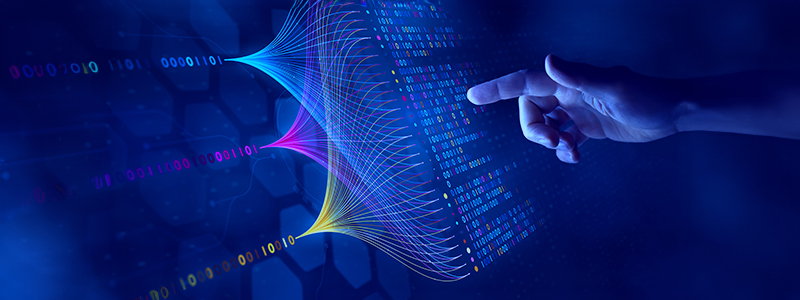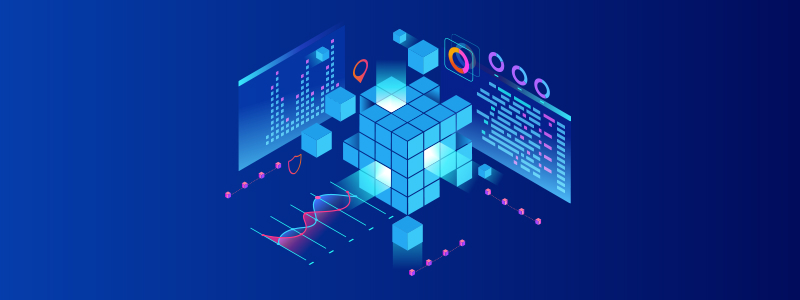
Understanding Autonomous AI Agents
We’ve all heard of digital assistants that perform specific tasks based on our requests. But what if these digital assistants could operate with ever more autonomy? While this requires an intelligent system, such as an autonomous AI agent, capable of recognizing opportunities and acting on them without constant human input or explicit instructions, the good news is that organizations no longer need specialized developers to build their own agents.
In this article, we’ll discuss what autonomous AI agents are, how they work, and what they mean for enterprises. But first, an overview of autonomous agents.
What are autonomous agents?
An autonomous agent is an entity or a system that takes actions independently, without direct human intervention.
When presented with an objective, autonomous agents generate a sequence of tasks, which they continue to complete until the overarching goal is fully realized.
While most autonomous agents today are built using artificial intelligence (AI) techniques, not all autonomous agents are inherently AI-driven. A typical autonomous agent is programmed to execute specific tasks based on some predefined rules, yet it possesses the capabilities to assess situations and act without constant human oversight.
For example, a simple thermostat in our homes autonomously regulates the temperature based on a pre-set temperature and feedback from a temperature sensor. This process relies on a basic control loop and doesn’t involve machine learning (ML) or complex AI algorithms.
Key characteristics that define autonomous agents
- Typically, a simple system (e.g., a chatbot)
- The ability to operate without constant human control
- Unless powered by AI, they follow predefined rules, heuristics, or logic to make decisions
- They can respond to stimuli but within pre-programmed boundaries
It’s the ability of autonomous agents to process data and make decisions that forms the basis of what we now recognize as autonomous AI agents.
What are autonomous AI agents?
Autonomous AI agents are software-based entities or systems that continuously learn from their environment, integrate information from various sources, and make decisions to accomplish tasks autonomously on our behalf.
In other words, an autonomous AI agent is simply an autonomous agent that incorporates AI technologies, such as ML models or natural language processing (NLP) engines, into its operational architecture.
The functionality of autonomous AI agents is heavily reliant on their ability to access and utilize information. For this, they use large language models (LLMs) to connect and process multiple lines of text. Seamless integration plays a crucial role here by enabling LLMs to retrieve up-to-date data from diverse sources such as the Internet, internal databases, and other external repositories.
Key characteristics of autonomous AI agents
- They operate without human control (e.g. AI-powered customer support bot)
- Autonomous AI agents use AI models to decide dynamically
- They learn and improve performance over time
- They use AI processing to adapt and react intelligently
Together, these traits empower businesses to automate, adapt, and innovate at an unprecedented scale.
AI agents vs. Autonomous AI agents
Now, what makes an autonomous AI agent different from an AI agent? An AI agent is any AI system that can perceive its environment (through inputs) and take action (produce outputs) toward achieving a specific goal. It could be very simple: for example, a chatbot that answers your questions using pre-programmed logic or a recommendation engine that suggests movies based on your past viewing. It usually follows a defined plan or model and needs to be guided or prompted frequently by a user or another system. It’s reactive: it responds to inputs but doesn’t really plan multiple steps ahead or work without constant supervision.
An autonomous AI agent, on the other hand, takes things to another level. It’s an AI agent that can plan, prioritize, make its own decisions across multiple steps, adapt, set subgoals, and keep working toward a high-level objective with minimal or no human input after being given a mission.
Quick way to think about it:
The difference between the two lies in the level of independence and proactive behavior:
- AI agent: “You tell me what to do next, and I’ll do it.
- Autonomous AI agent: “You tell me the goal, and I’ll figure out what to do next, over and over, until it’s done.”
How do autonomous AI agents work?
As noted, autonomous AI agents leverage advanced technologies to perceive, reason, act, and learn within their environment in order to achieve the objectives without constant human intervention. The flow chart below illustrates what the overall process looks like:
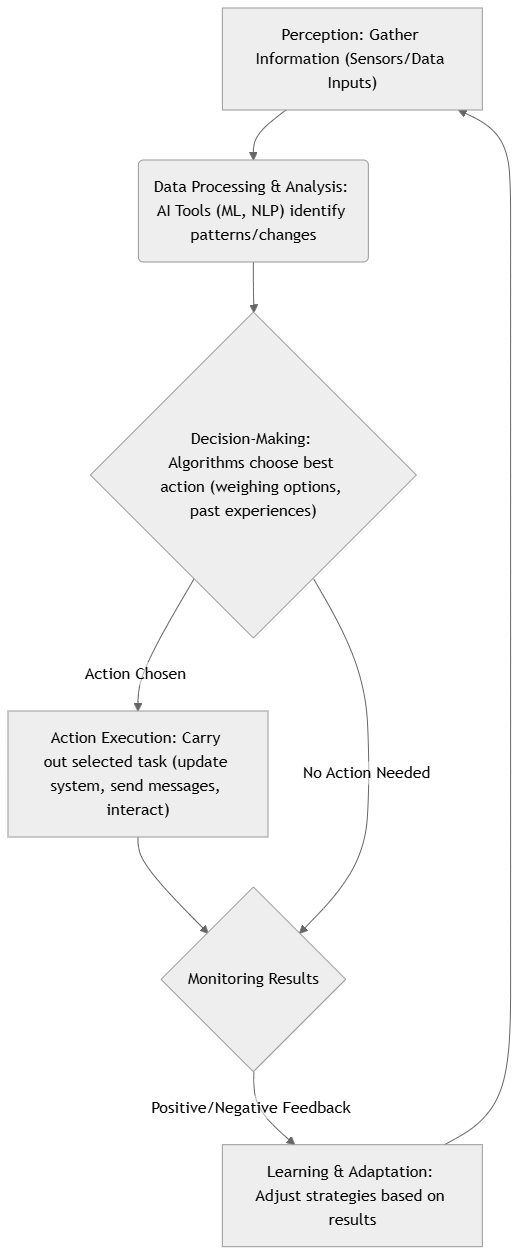
How autonomous AI agents work
Here’s how autonomous AI agents work:
-
Environmental perception and data acquisition
Autonomous AI agents begin by sensing their surroundings using a variety of sensors or data inputs relevant to their domain. For a physical robot, this could include cameras, lidar, sonar, and tactile sensors. For a software agent, it could mean accessing databases, APIs, network traffic, user inputs, or information on the internet.
The quality and variety of sensor data shape its understanding of the world around it. This stage often involves preprocessing the raw data to make it usable for subsequent analysis.
-
Interpretation and understanding through AI
The raw data gathered needs to be processed and understood. This is where various AI techniques come into play:
- Machine learning (ML): Autonomous AI agents leverage ML algorithms to learn from data. This includes supervised learning, where a model learns from examples that already have the correct answers; unsupervised learning, where the model looks for patterns in data without any labels; and reinforcement learning, where it learns by trial and error, receiving rewards or penalties based on its actions.
- Natural language processing (NLP): NLP is vital for agents that interact with users or analyze textual information, and they use it to understand and process human language (including AI prompts), whether in the form of text or speech. Large Language Models (LLMs) further enable them to understand context, generate text, and reason about language.
- Computer vision: Agents operating in physical environments or analyzing visual content use computer vision to “see” and interpret visual information from cameras or image/video data.
- Reasoning and planning: AI techniques that enable the agent to make logical inferences, solve problems, and plan a sequence of actions to achieve its goals. This can involve symbolic AI, knowledge graphs, or more advanced planning algorithms.
-
Goal formulation and task prioritization
An autonomous AI agent typically operates with a set of predefined high-level goals or objectives. However, a key aspect of autonomy is the ability to break these down into smaller, actionable jobs, or sub-tasks. The agent prioritizes these tasks based on factors like urgency, relevance, and available resources by evaluating different possible actions and their probable outcomes.
-
Decision-making and action selection
Based on its understanding of the environment, its goals, and the prioritized tasks, the agent then makes decisions about what action to take next. The decision-making process can involve various strategies:
- Rule-based systems (within AI): Following a set of predefined rules to determine the appropriate action.
- Model-based approaches: Using an internal model of the world to simulate the consequences of different actions and choose the one that is most likely to lead to the desired outcome.
- Reinforcement learning: Learning an optimal policy (a mapping from states to actions) through interaction with the environment and receiving feedback in the form of rewards or penalties.
-
Autonomous action execution
Once a decision is made, the agent then executes the action without requiring step-by-step human guidance. For example, it could make API calls, update databases, send emails, or interact with other software systems.
-
Continuous learning and adaptation
After executing an action, the agent monitors the results to determine if the desired outcome was achieved. It uses feedback from the environment and from any human corrections to fine-tune its decision-making process. This is what makes the autonomous AI agent progressively smarter over time.
Types of autonomous AI agents
Autonomous agents can be classified in several ways. Here are different categories of autonomous AI agents:
Types of autonomous AI agents based on their architecture
Simple reflex agents are the most basic type of autonomous agents. They react directly to the current environment based on predefined rules, which means they don’t have memory of past states or future consequences. For example, a website chatbot that automatically answers frequently asked questions based on keywords detected in the customer’s query.
Model-based reflex agents maintain an internal model of the world, allowing them to reason about the environment’s state and how it evolves. They can make decisions based on their current perception and their internal model. In practice, the operation of model-based agents involves a continuous cycle of perception, model refinement, and decision-making, with data integration from external enhancing the preexisting knowledge. An example is an AI system monitoring warehouse inventory levels using sensors and sales data.
Goal-based agents have a specific goal in mind and plan their actions to achieve. They consider different possible sequences of actions and choose the one that leads the system to the desired outcome. An AI agent with the goal of identifying leads that are most likely to convert into customers integrated with a CRM system is an example of a goal-based autonomous agent.
Utility-based agents go beyond achieving a goal and aim to maximize their “utility”—a measure of how desirable an outcome is. From among multiple ways to achieve a goal, a utility-based autonomous agent will choose the one that provides the highest utility. A ride-hailing app that tries to minimize wait time and cost for a user is an example.
Types of autonomous AI agents based on their levels of complexity and autonomy
Reactive agents react immediately to their environment without relying on a deep internal model (a representation of their environment that helps agents understand and act) or much deliberation. Reactive autonomous agents are simple to design and implement as they rely on direct stimulus-response patterns. Simple reflex agents fall into this category.
Deliberative agents are also referred to as planning agents and are designed to “think ahead”. This means they construct and rely on internal models of their environment. Deliberative autonomous agents engage in reasoning and planning before taking action, which makes them a perfect fit for complex environments. Goal-based and utility-based agents are often deliberative.
Hybrid agents combine reactive and deliberative capabilities, allowing them to respond quickly to immediate situations while also engaging in more complex reasoning when needed. By design, hybrid autonomous AI agents are capable of transitioning between modes of operation as the situation evolves, delivering consistent performance in both predictable and unpredictable scenarios.
Types of autonomous AI agents based on interactions
Single agents are autonomous systems that operate independently to achieve their goals. Single autonomous agents employ a combination of reactive and deliberative techniques to quickly respond to immediate changes while also considering longer-term objectives.
Multi-agent systems consist of multiple autonomous agents that interact with each other to solve problems or achieve common goals. They can collaborate, compete, or coordinate their actions. Teams of robots working together, or distributed sensor networks are examples of multi-agent systems. Read more about multi-agent systems.
Real-world use cases and examples of autonomous agents for businesses
Autonomous AI agents assist several functions and departments across a company. Here are a few use cases with examples that demonstrate how businesses are using autonomous agents:
How sales teams can use autonomous agents
Use case: intelligent lead qualification and prioritization
Companies use autonomous AI agents that connect to their CRM and marketing automation platforms. These AI agents analyze incoming leads based on various data points (e.g., demographics, firmographics, website activity, engagement with marketing content). The agent automatically scores and ranks leads based on their likelihood to convert, allowing sales teams to focus their efforts on the most promising prospects.
Use case: automated sales follow-up and engagement
AI agents can be programmed to automatically send personalized follow-up emails to leads based on their interactions and stage in the sales cycle. These agents can also schedule meetings and provide relevant information, nurturing leads without direct human intervention until they are ready for a sales representative.
Autonomous agents for marketing teams
Use case: personalized content creation and distribution
Autonomous AI agents can create marketing copy, social media posts, and even initial drafts of blog posts and articles based on predefined topics and target audience profiles. These agents can also schedule and distribute content across various channels at optimal times.
Use case: automated campaign management and optimization
AI agents can manage digital advertising campaigns across platforms like Google Ads and social media. They can autonomously adjust bids, target audiences, and ad creatives based on real-time performance data to maximize ROI and achieve campaign goals.
Autonomous agents in customer service
Use case: AI-powered chatbots for instant support
Many businesses use sophisticated AI chatbots on their websites and apps to provide instant answers to customer queries, resolve common issues, and guide users through processes. These autonomous agents handle a large volume of inquiries simultaneously, enabling teams to focus on more complex customer support tasks.
Use case: proactive customer issue resolution
Enterprises also use autonomous AI agents that can analyze customer data and identify potential issues. For instance, an agent monitoring server performance might detect an anomaly that could lead to service disruption for a customer and automatically trigger a fix or notify the technical team proactively.
Using autonomous agents in operations and supply chain departments
Use case: predictive maintenance for equipment
In manufacturing, AI agents connected to sensors on machinery can continuously monitor performance data (e.g., temperature, vibration). By analyzing these patterns, the agents can predict when equipment is likely to fail and automatically schedule maintenance, minimizing unplanned downtime and optimizing production schedules.
Use case: optimized inventory management and demand forecasting
Autonomous AI agents can analyze historical sales data, seasonal trends, marketing campaigns, and external factors to forecast future demand with high accuracy. The agents can also autonomously trigger purchase orders when inventory falls below certain thresholds, enabling businesses to reduce storage costs and prevent stockouts.
How finance teams benefit from autonomous agents
Use case: automated fraud detection and prevention
Financial institutions and e-commerce platforms use autonomous agents to analyze transaction data in real-time, identifying patterns and anomalies that may indicate fraudulent activity. These agents can automatically flag suspicious transactions for further investigation, preventing financial losses.
Use case: automated financial reporting and analysis
Autonomous AI agents assist finance teams by automating the process of collecting, cleaning, and analyzing financial data from various sources. They can even generate reports and provide relevant insights to finance teams, freeing up their time for more strategic decision-making.
Autonomous agents in human resources
Use case: AI-powered recruitment and talent acquisition
Deploying a workforce of autonomous AI-powered HR agents enables a business to offload a substantial amount of admin and HR support related tasks otherwise handled by multiple employees. For example, they can screen job applications, identify qualified candidates based on specific criteria, and even conduct initial interviews through chatbots, allowing HR personnel to engage with the most promising candidates.
Use case: automated employee onboarding and support
AI-powered virtual assistants can guide new employees through the onboarding process as well as provide information and ensure they have access to necessary resources. They can also act as a first point of contact for employee inquiries on HR policies and procedures.
Autonomous agents for IT teams
Use case: automated cybersecurity threat detection and response
AI-powered security agents can continuously monitor network traffic and system logs to detect suspicious activities and potential cyber threats in real-time. They can autonomously respond to certain types of threats, such as isolating infected systems or blocking malicious IP addresses.
Use case: automated system monitoring and maintenance
Autonomous AI agents can monitor the performance and health of IT systems and infrastructure. They can also identify potential issues and automatically trigger maintenance tasks or alerts to prevent disruptions.
How autonomous AI agents benefit businesses
Incorporating a fleet of autonomous AI agents brings significant benefits to businesses by offering capabilities that drive agility, optimize resource allocation, and enable rapid adaptation to dynamic environments. Here are the key advantages:
- Enhanced efficiency and productivity across departments: A fleet of autonomous agents automates several tasks simultaneously, freeing up the human workforce to focus on more strategic and creative work.
- Improved, holistic decision-making: With agents operating in various functions, the business gains access to a more comprehensive and interconnected view of its operations. Insights generated by one agent can inform the actions of others, leading to better-informed and more strategic decision-making across the organization.
- Significant cost reduction and resource optimization: Automating numerous tasks with a fleet of autonomous AI agents offers substantial cost savings in terms of labor, reduced errors, and optimized resource allocation. Agents can work 24/7 without breaks and handle repetitive tasks that would otherwise require multiple employees.
- Increased scalability: A fleet of autonomous AI agents provides businesses with the ability to handle fluctuating workloads and adapt to changing market conditions. Adding or reallocating existing agents to different tasks is generally more efficient than hiring and training new human employees.
Implementing autonomous AI agents across your business
Crafting a strategy to deploy AI agents across the organization is as much an art as it is a technical challenge. Here are some guidelines and best practices:
- Begin with a use case: Identify specific processes where an AI agent can replace repetitive tasks. These could be support ticket routing or generating tailored marketing content.
- Start small and scale gradually: Avoid overcomplicating the process. Pilot projects that focus on low-risk, high-impact areas are ideal to gather insights and identify any areas of improvements. For example, integrate an agent into routine tasks like drafting standard emails or scheduling follow-ups before deploying it in complex, high-stakes scenarios.
- Choose the right architecture: Decide whether a fully autonomous or a scripted AI agent suits your use case. Many scenarios call for a a hybrid approach that combines autonomous decision-making with human oversight. This mitigates inherent risks like AI hallucinations and unexpected behaviors.
- Build for flexibility and integration: Agents should not operate in isolation. Establish APIs or use agent frameworks that allow your AI to plug into your systems with minimal friction, access up-to-date information, and perform their tasks according to your expectations.
- Emphasize human oversight: Always keep humans “in the loop” for critical approvals or interventions because even the most sophisticated autonomous agents need a safety net.
- Leverage AI agent builders: Consider pre-built solutions to streamline and accelerate the process of building AI agents. Platforms like Astera AI Agent Builder provide tangible tools to deploy purpose-built AI agents across your organization.
Build your fleet of autonomous AI agents with Astera
Modern problems require modern solutions. This is why Astera offers its intuitive AI Agent Builder that enables everyone in your enterprise to create their own autonomous AI agents, regardless of their technical expertise.
Here’s how Astera AI Agent Builder helps:
- Rapid autonomous AI agent development that turns ideas into working agents in hours
- Seamless integration with enterprise data sources whether databases, files, or APIs
- Scalable and secure platform that supports any LLM—OpenAI, Anthropic, Mistral, Llama, and even your internal models
- AI for everyone enables every team, from HR to customer support to sales and marketing, to create AI solutions without relying on specialized coding teams
- Continuous improvement via a simple drag-and-drop environment that enables anyone to easily iterate, test, and optimize their AI agents
Curious to learn more? Explore Astera AI Agent Builder and find out how you can equip all your teams with autonomous AI agents!
 Astera AI Agent Builder - First Look Coming Soon!
Astera AI Agent Builder - First Look Coming Soon!